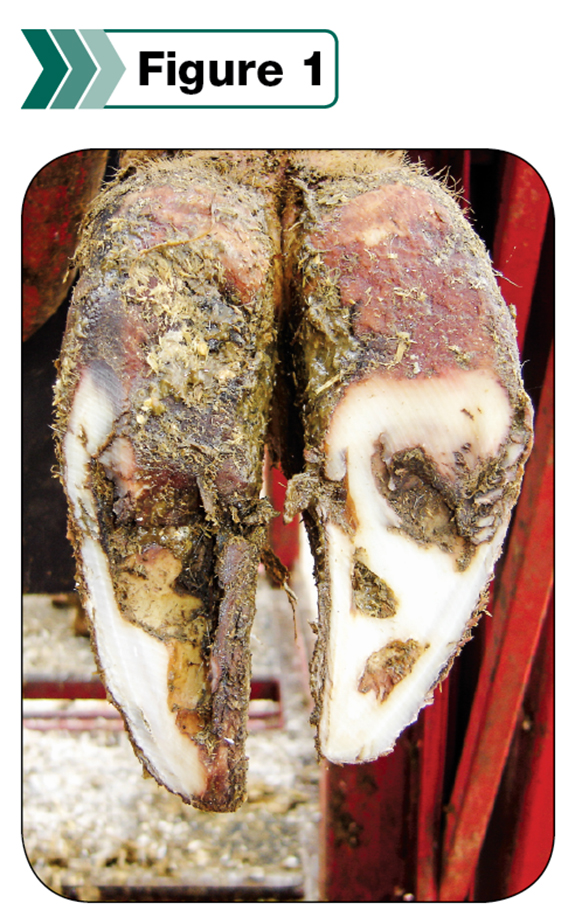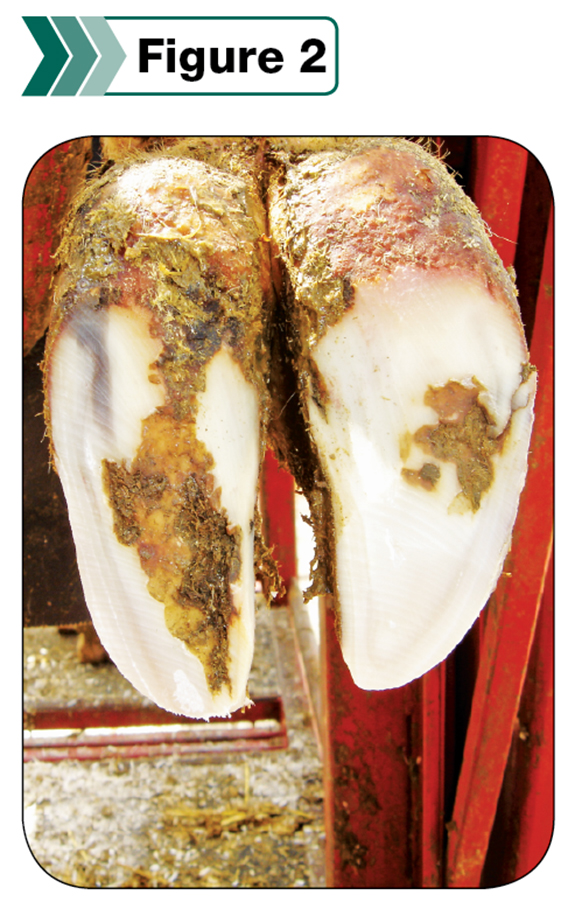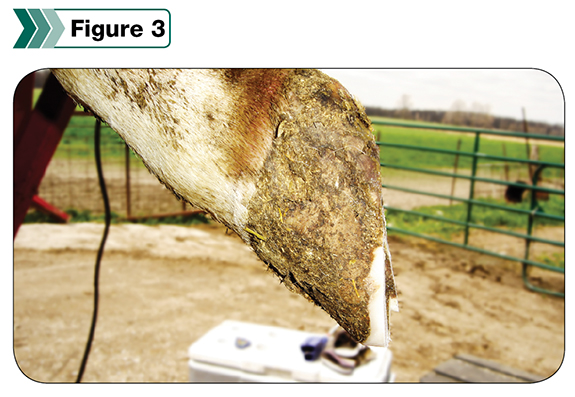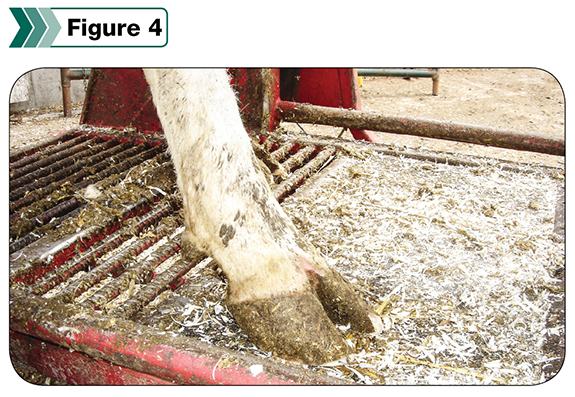Best management practices allow all the good things for the baby calf that keep her properly nourished and comfortable as she grows from heifer into her first lactation. We like to think these include automatically good feet and legs that will walk right into the fresh cow group ready to create farm profit.
However, this is not always the case. Some heifers enter the dairy herd with overgrown feet or hoof infections such as digital dermatitis.
These factors can do long-term and unnecessary damage to the tendons and ligaments of the foot and leg structure. This article is to help create and guide the decision process for hoof-trimming heifers.
In discussing hoof care for heifers, a good analogy is dental work. No one likes to visit the dentist, but the value for long-term health is there. Also one should note that hooves, like teeth, could grow incorrectly.
It is a lot easier to correct teeth with braces at a younger age than at an older age. Consequences of incorrect horn growth are easier to fix on younger animals than when they reach maturity.
Like tooth decay, lameness does not need to be inevitable. As with life in general, what you get out is directly related to what you put in.
Two simple things dairy farm managers can do to protect their herd future are:
1. Learn what healthy hooves look like and what to do to keep them that way.
2. Look at your heifers’ feet and compare yours to industry standards such as breed association criteria for

proper conformation of feet and legs.
A recent study done in Ontario showed a direct correlation between the high-prevalence digital dermatitis (DD) milking herds with the high prevalence of DD in the respective heifer groups.
It is very important to monitor heifer foot health and stop early stages of infectious problems, such as DD, from attacking and spreading through heifer groups.
DD can be contracted at a very young age, so disease management is an essential consideration.
If you notice DD in the heifer pen, clean the barn or group area and start a foot bathing program.
The Treponeme organism that causes DD requires an anaerobic environment, so try to keep the manure build-up on the feet of animals to a minimum.
Good foot angle (ranging from 40 to 50 degrees) and heel depth are very advantageous to the longevity of dairy cattle. It is best to see that young cattle with overgrown feet are

trimmed.
“Why should we, when they will wear them off in pasture?” is a common comment we as trimmers hear about some dairy herds.
The fact is that overgrown hooves wear the sole off first from the highest point (usually the heel and solar horn), then they break the toes off.
By then your decision to not trim those cattle has prevented them from their best development because the heel is lost, as well as the foot angle that could have been.
Clients interested in preventing this typically ask: Should heifers be trimmed prior to calving, and if so, at what age should we start?
The answer is: That depends. Some dairy farms trim heifers before breeding.
At a minimum, examine her hooves before she calves. A normal hoof horn grows at a rate of a quarter-inch or so a month.
That’s too slow to see visually, so don’t be fooled if the toes measure 3 to 3½ inches from the hair line with reasonable foot angle at one inspection – and then you wait too long and

suddenly you’re confronted with severely overgrown hooves in your group.
Even reasonably shaped hooves require inspection of the sole ( Figure 1 ). This practice pays big dividends.
Heifers that calve with sole lesions are much more likely to have chronic recurring lesions through life.
Trimming the sole ( Figure 2 ) and the hoof to reasonable length allows for a good-looking foot ( Figures 3 and 4 ) that can care for itself for a period of time.

Hooves can adjust themselves to a variety of environments, so there is no “one size fits all.” I like to keep clients informed so they can make choices that are practical for their situations.
A happy heifer will live to become a happy cow. It’s a matter of taking the bumps we sometimes create out of her path.
I also recommend that every dairy needs a safe, efficient way to restrain cattle and lift feet.
Lack of facilities for equipment and processing of animals is the number one cause of delayed intervention.
Cow owners are not hard-hearted and neglectful, but they can get tired and stressed from regular farm duties. If it takes three guys to pick up a foot, it is time to re-evaluate the system.
A chute system can enable you to save thousands of dollars in lameness costs and prevents untold agony, both human and bovine. PD
Weingart is a hoof trimmer in Connecticut and a member of the Hoof Trimmers Association . Visit their website to learn more about the association.
References omitted due to space but are available upon request. Click here to email an editor.







